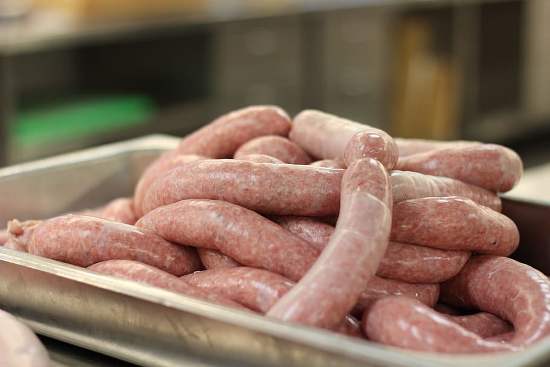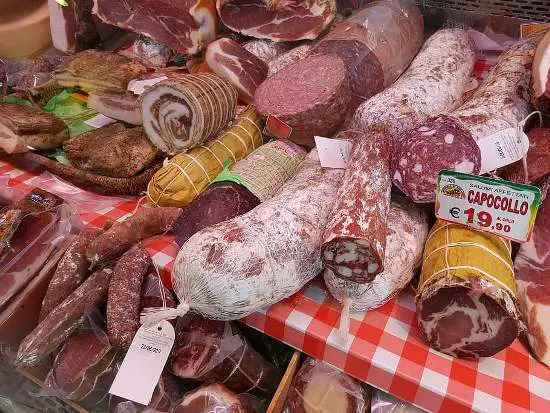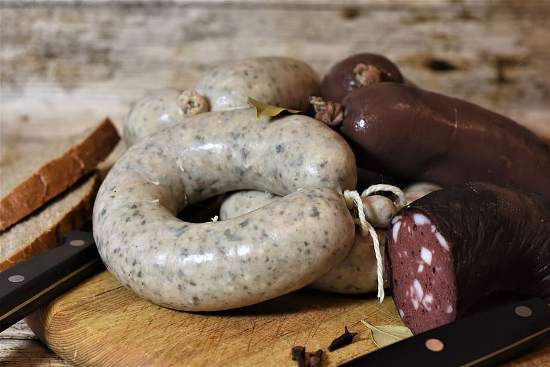If there's one thing that unites food lovers across cultures and cuisines, it's the humble sausage.
From breakfast links to gourmet charcuterie boards, this savory treat has been a staple in kitchens worldwide for centuries. But where did this beloved food originate, and how has it evolved over time?
In this article, we'll explore the history and diversity of sausage, from ancient times to modern-day varieties.

The Origins of Sausage
Sausage has a long and storied history, dating back to ancient civilizations like the Greeks and Romans. These early versions of sausage were made by stuffing animal intestines with ground meat, spices, and herbs.
The etymology of the term 'sausage' can be traced back to the Latin word 'salsus,' denoting the process of salting or preserving, which aptly captures the culinary essence of this savory delicacy.
Medieval Sausage-Making
During the Middle Ages, sausage-making became a widespread practice in Europe. Sausages were a way to preserve meat before the advent of refrigeration, and they were often made with a combination of meats like beef, pork, and veal.
Sausages were also a way to use up leftover meat, making them a frugal and practical choice for cooks.
Regional Varieties of Sausage

As sausage-making spread throughout Europe, different regions developed their own unique varieties of sausage.
In Germany, sausages like bratwurst and weisswurst are popular, while in Italy, varieties like salami and prosciutto are beloved.
In Spain, chorizo is a favorite, while in France, saucisson is a staple of charcuterie boards.
Sausage in the New World
When European colonizers arrived in the New World, they brought their sausage-making traditions with them.
In the United States, sausages like hot dogs and breakfast links became popular, while in Mexico, chorizo is a beloved ingredient in dishes like huevos rancheros.
Sausage-Making Today
Today, sausage-making is a thriving industry, with a wide variety of sausages available to consumers.
From mass-produced grocery store sausages to artisanal, small-batch varieties, there's a sausage for every taste and occasion.
Many restaurants and food trucks also specialize in gourmet sausages, offering creative combinations of meats, spices, and flavors.
How Sausages Are Made

So, how are sausages made? The process can vary depending on the type of sausage, but generally involves grinding meat and mixing it with spices, herbs, and other flavorings.
The mixture is then stuffed into casings, which can be made from natural materials like animal intestines or synthetic materials like collagen.
Health Benefits and Risks of Sausage
While sausage is undeniably delicious, it's also important to consider its health benefits and risks.
On the one hand, sausage is a good source of protein and can be part of a balanced diet. On the other hand, some sausages are high in saturated fat and sodium, which can increase the risk of heart disease and other health problems.
Buying and Storing Sausage
When buying sausage, it's important to choose a high-quality product that is fresh and free of additives and preservatives. Look for sausages that are made with whole cuts of meat and natural casings, and avoid sausages that are heavily processed or contain artificial flavors and colors.
When storing sausage, keep it refrigerated and use it within a few days of purchase. Some sausages can also be frozen for longer-term storage, but be sure to follow proper freezing and thawing procedures to ensure the best quality.
Vegan and Vegetarian Sausage
While traditional sausages are made with meat, there are now a wide variety of vegan and vegetarian sausages available for those who follow plant-based diets.
These sausages are typically made with ingredients like soy protein, wheat gluten, and vegetables, and are flavored with spices and seasonings to mimic the taste of traditional sausages.
What is the Difference between Sausage and Hot Dogs?
Hot dogs are a type of sausage that is usually made with a blend of meats, while sausages can be made with a variety of meats and spices.
What are Some Popular Types of Sausage?
Popular types of sausage include bratwurst, chorizo, salami, and breakfast links.
Can Sausage be a Healthy Part of a Diet?
Sausage can be a good source of protein, but it's important to choose high-quality sausages that are low in saturated fat and sodium.
How Can I Cook Sausage?
Sausage can be grilled, baked, fried, or simmered, depending on the recipe and type of sausage.
Are there Vegan and Vegetarian Versions of Sausage Available?
Yes, there are now many vegan and vegetarian sausages available that are made with plant-based ingredients like soy protein and wheat gluten.
Conclusion
Sausage may have humble origins, but it has evolved into a beloved and diverse food that can be found on tables all around the world.
From ancient times to modern-day varieties, sausage has been a way to preserve meat, use up leftovers, and create delicious and satisfying meals.
Whether you prefer traditional meat sausages or plant-based versions, there's no denying the appeal of this delectable treat.
